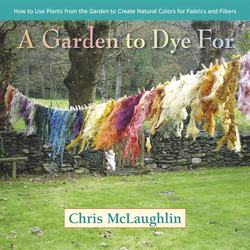Читать книгу A Garden to Dye For - Chris McLaughlin - Страница 15
На сайте Литреса книга снята с продажи.
The Magic of Mordants
ОглавлениеAs I mentioned, some plant dyes are naturally colorfast, and some aren’t color-fast at all (meaning you’ll get color at first, but it’ll wash out or fade very quickly), and others just need a little assistance. Enter the mordants.
A mordant is used to help the color “stick” or bind to the fiber. Some are metallic, such as alum (potassium aluminum sulfate), iron (ferrous sulfate), copper (copper sulfate), tin (stannous chloride), and chrome (potassium dichromate). Copper, tin, and chrome are the least earth-and-people-friendly. They’re toxic even in small quantities and disposing of them requires extra-special handling.
For the purposes of this book, we’ll be discussing only the safest and most eco-friendly mordants: alum, along with cream of tartar, iron, and plant-based mordants. When these mordants are used in the right proportions they’re safe and considered non-toxic. Don’t take this to mean that they can’t irritate your hands or lungs, however. Gloves (and preferably a mask) should be used when handling any metallic mordant. Be sure to read “The Safety Talk” in Chapter 2.
Plant-based mordants are obtained from plants that are naturally heavy in tannins (tannic acid), such as acorns, oak galls, and sumac leaves. I use acorns or oak galls, but staghorn sumac leaves can also be used. We can even “borrow” tannins from plants (without using them as an actual dye) to create a mordant bath. Sumac leaves, for example: to use them as a mordant, just add a big handful of leaves to a couple of gallons of water and simmer for 2 hours. Strain off the leaves and you have a mordant bath ready for fabric. It’s that simple.
Good to Know:
Some plants have natural binding properties and don’t need the assistance of a separate mordant to offer you long-lasting color. Examples would be: black walnuts, acorns, oak galls, pine bark, pomegranate rind, onion skins, rhubarb, apple tree branches, and Osage-orange bark.
Rhubarb leaves contain oxalic acid and make a nice mordant for animal fibers. But please be cautious if you choose to use rhubarb as a mordant or dye – the leaves are very poisonous. Dispose of them carefully to keep them out of the reach of animals or people.
